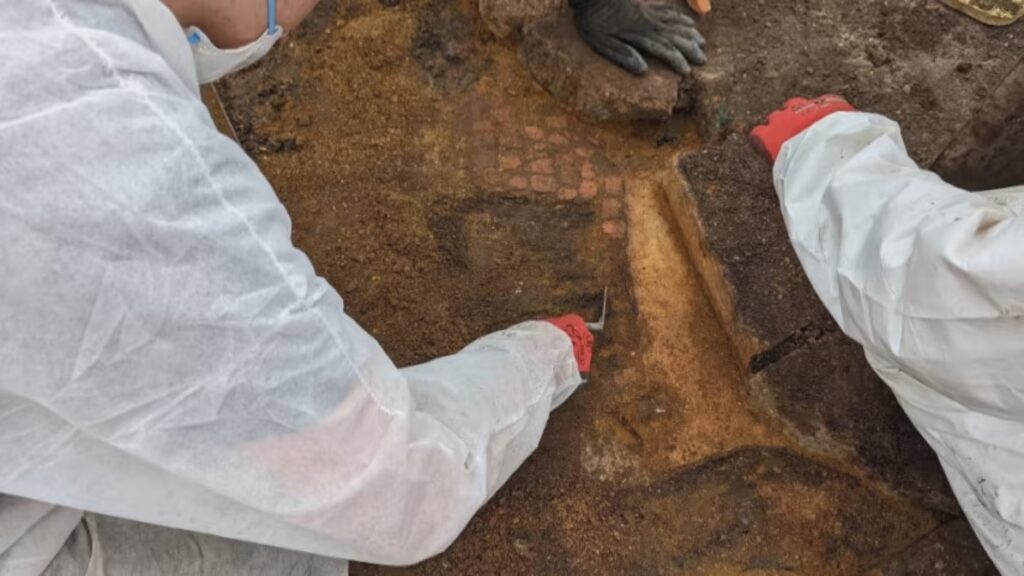Roman Mosaic Re-Exposed by Archaeologists In Folkestone
The Remains of a Roman mosaic reburied 65-years-ago has been re-exposed by Archaeologists from the canterbury Archaeologists trust

The mosaic is part of the central dining room from a large 2nd century villa complex situated on the cliffs overlooking Folkestone, England.
Beneath the Roman foundations are traces of an earlier Iron Age settlement, occupied by native Britons centuries before the Roman invasion.

The complex was first excavated by archaeologists in 1924, however, the cost of maintaining the site led to the mosaic being reburied to preserve the monument.
Local accounts at the time reported the mosaic being in a poor state of preservation.
Excavations during the 1920’s found Classis Britannica tiles which suggests that the villa might have a connection to the Roman Navy in Britain, or that the villa was possibly some sort of signalling station.
For reasons that are unclear, the villa seems to have been abandoned sometime in the late third century. It was briefly reoccupied in the 4th century, before it was abandoned and buried under sediments.
Due to the threat of coastal erosion, the mosaic is now under threat of falling into the sea, evidenced by the loss of several rooms of a bath-suite which have already been lost since the 1920’s.
Beginning in 2010, the Canterbury Archaeological Trust has been recording sites under threat as part of a collaboration with local volunteers and university students.
The aim of the study at the Folkestone mosaic is to determine what still survives and how best to preserve the monument.
The team found that the southern part of the mosaic survives, thanks in part to the restoration works conducted in the 1920s to stabilise what remained of the Roman designs.
After documenting the remains, the mosaic will re-buried while discussions on whether it should be lifted and preserved for displaying in a museum are undertaken.
